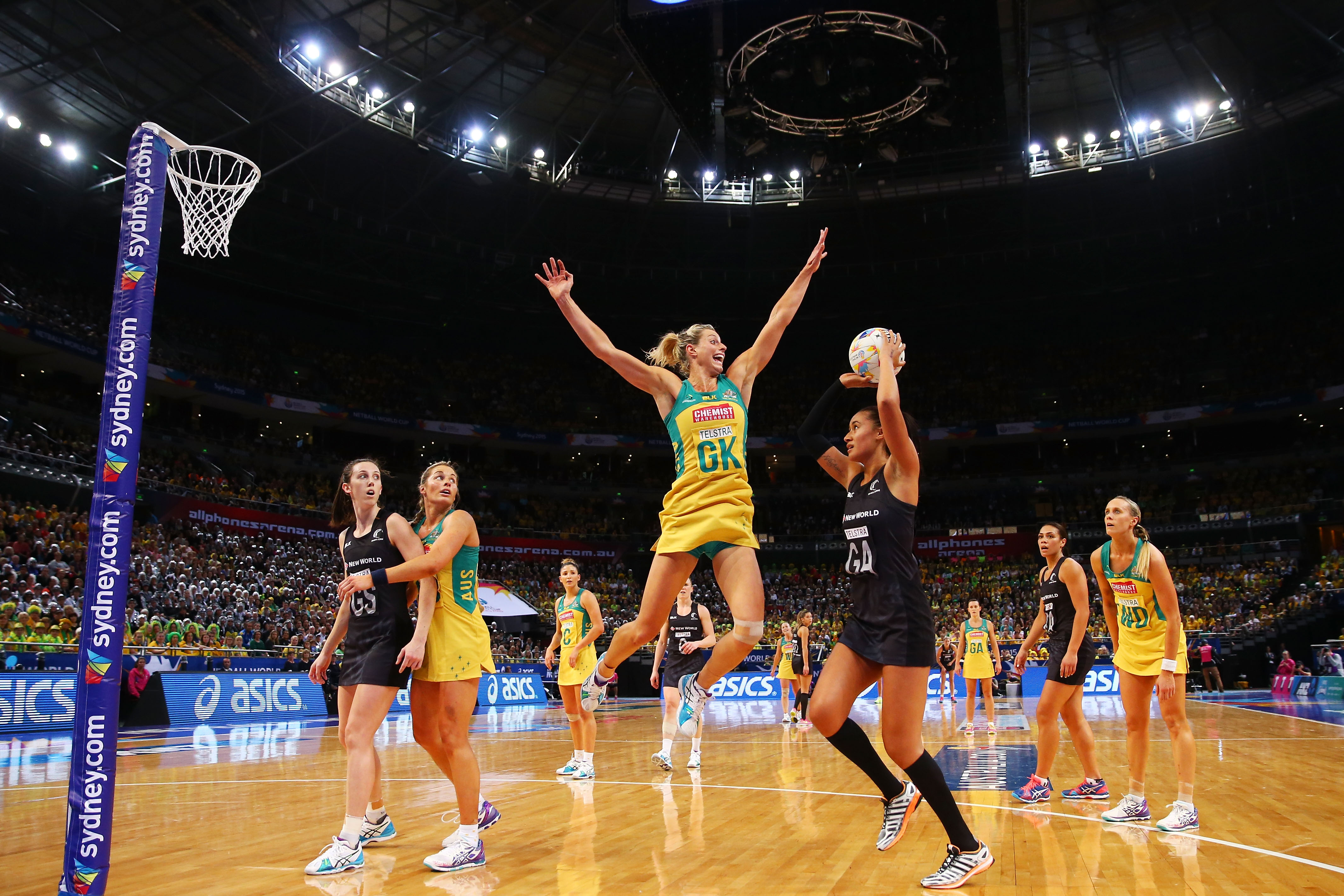Netball is a game that resembles basketball and is played by women and girls. Two teams, each of seven players, take part in a match. The players of each team pass the ball among themselves by throwing it. The players in each team try to get the ball into a half-circle, called a goal circle, at the end of the court that they are attacking. They pass it to one of the two players in the team who may shoot a goal. One of these two players—called the goal shooter and the goal attack—scores a goal when she throws the ball so that it passes downward through a ring about 10 feet (3 meters) from the ground. The team scoring the greater number of goals wins.

Netball court and equipment.
The netball court is 100 feet (30.5 meters) long and 50 feet (15.25 meters) wide. Court surfaces should be hard, but the material used varies among countries. Asphalt is the best material. The court is divided into thirds—two goal thirds and a center third. The goal circles are in the goal thirds and are 32 feet (9.8 meters) in diameter. The center circle is in the center third and is 3 feet (0.9 meter) in diameter.
The goal posts, which may be made of wood, metal, or concrete, stand on the middle of each goal line. The ball is made of leather or molded rubber. It is from 27 to 28 inches (69 to 71 centimeters) in circumference and weighs 14 to 16 ounces (395 to 455 grams). It should be firmly inflated.
The game.
An international match lasts for one hour and is divided into four periods called quarters. In school and club matches, a match may consist of two halves, each of 20 minutes. There are seven players in a team: goal shooter, goal attack, wing attack, center, wing defense, goal defense, and goalkeeper. Players may play only in specific areas, according to their positions. Players are penalized if they enter the wrong area. Two umpires control the game and decide whether any rules have been broken.
The game begins with a center pass from one center player, who stands in the center circle. Before play starts, all players except the center with the ball may move. But the center who does not have the ball may move only within the center third, and the other players only within the goal thirds. To begin the game, the center with the ball passes it to another player in her team, who must catch or touch the ball in the center third. The game is restarted with a center pass after each goal is scored, and after an intermission. The two center players take turns making these center passes throughout the game.
Attacking play.
The team with control of the ball is attacking. The players run and dodge into spaces so that they can make a series of passes toward their goal. They may throw or bounce the ball to any member of their team, in any direction, but they may not pass it over two of the lines that divide the thirds. The player receiving the ball must be within her own area. Players may not run with the ball nor hold the ball for longer than three seconds. The aim is for the goal shooter or goal attack to receive the ball in the shooting circle, shoot at goal, and score.
Defensive play.
The team not in possession of the ball is defending. There are two main methods of defense. One method is to mark an opponent and prevent her from getting free or receiving a ball thrown to her. The other method is to intercept an opponent’s throw or shot at goal. Players may not make personal contact with an opponent nor come within 3 feet (0.9 meter) of an opponent who has the ball. The penalty for this offense is a penalty pass or shot.
History.
Netball was first played in 1895 in England. The sport rapidly spread throughout the British Commonwealth.
The All England Netball Association was formed in 1926. The International Federation of Women’s Basketball and Netball formulated the first international rules in 1960. The federation later changed its name to the International Federation of Netball Associations (IFNA). The federation has more than 60 members and associate members. divided into five regional associations, covering Africa, the Americas, Asia, Europe, and Oceania. IFNA organizes a world tournament every four years. Teams from Australia and New Zealand have been especially successful in these world championships.
